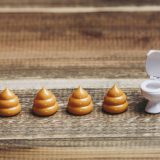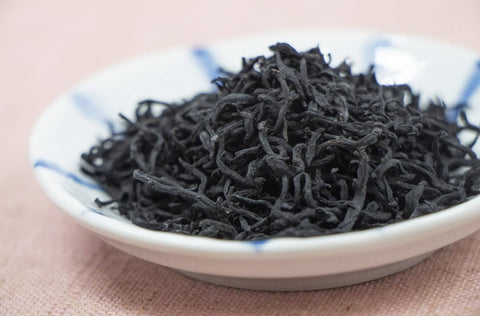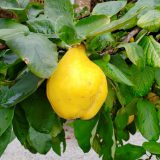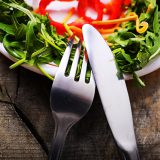This time, we will thoroughly explain the function of insoluble dietary fiber, the foods that contain a lot of it, and how to take it correctly.
There are two types of dietary fiber, insoluble dietary fiber and water-soluble dietary fiber, but the one that tends to attract attention is water-soluble dietary fiber.
However, insoluble dietary fiber is also very useful for our body, such as excretion of harmful substances from the body and suppression of constipation.
I will tell you in an easy-to-understand manner so that even those who are just beginning to be interested in health can understand it, so please take a look to the end!
First, before explaining insoluble dietary fiber, I will briefly explain the dietary fiber itself.
Dietary fiber is a component contained in food, and is a component that cannot be decomposed by human digestive enzymes (indigestible) .
Proteins, lipids, carbohydrates, etc. are decomposed by digestive enzymes such as saliva in the mouth, esophagus, and stomach, and are absorbed into the body from the small intestine.
However, dietary fiber is not broken down by these digestive enzymes and passes through the small intestine to reach the large intestine.
Most of the dietary fiber is complex saccharide (polysaccharide) in carbohydrates, and it is not digested, so it is not energy.
It used to be meaningless because it does not function as an energy source, but now it is attracting attention as the sixth nutrient next to the five major nutrients. ..
The standard daily intake of dietary fiber is 20 g or more for adult men and 18 g or more per day for adult females.
There are two main types of dietary fiber: insoluble dietary fiber and water-soluble dietary fiber.
Insoluble dietary fiber is insoluble insoluble dietary fiber .
The dietary fiber you have in mind is insoluble dietary fiber.
Insoluble dietary fiber has a complicated structure such as filaments, spider webs, and loofahs, and is characterized by being lumpy and rough .
Next, I would like to tell you about the three functions of insoluble dietary fiber.
The function of insoluble dietary fiber is
Ingestion of insoluble dietary fiber activates intestinal activity (peristaltic movement) , shortening the time that food stays in the digestive tract such as the stomach, small intestine, and large intestine. prompts you to put out poop .
If you imagine it a little, let's say that the goal is to poop.
In such a case, it may be easier to think that insoluble dietary fiber becomes a leader and bundles things that are materials for poop such as water in the stomach and intestines, food waste, and dead bodies such as intestinal bacteria.
In other words, Insoluble dietary fiber promotes defecation and leads to relief and suppression of constipation .
Pooping If you stay in the large intestine for a long time, intestinal putrefaction will occur in the large intestine.
Ingestion of insoluble dietary fiber plays an important role, as intestinal putrefaction can lead to the growth of bad bacteria and the generation of harmful substances.
The second is , which adsorbs harmful substances and discharges them to the outside of the body .
Insoluble dietary fiber entangles water and food debris.
If you entangle it, the amount of poop will increase.
It's a little old study, but the study of "Relationship between dietary fiber and cancer" by Dr. Dennis Berkitt, a British doctor in 1972, is very interesting.
The study compares the amount of poop in dietary fiber (probably mainly insoluble fiber) with African farmers who lived a normal life . As a result, came out as a result of more than four times as many African farmers.
In other words, people who consume a lot of (insoluble) dietary fiber have more poop.
When this insoluble dietary fiber entangles everything, it also entangles harmful substances and excretes from the body.
If harmful substances stay in the intestines, they cause the growth of bad bacteria, which can cause constipation, rough skin, lifestyle-related diseases, and cancer.
I wrote an article that considered the experiment in a little more detail, so please read it when you have time.
The third is , which feeds good bacteria in the intestine, prepares the intestinal environment, and prevents various diseases .
Good bacteria have a complicated structure and feed on sugar that reaches the large intestine without being digested.
Since most of the insoluble dietary fiber is this complex sugar, it feeds good bacteria and prepares the intestinal environment.
When the intestinal environment is in place, constipation is less likely to occur and symptoms of allergies are alleviated, leading to improvement of our daily upset.
If you would like to know more about "What is the preparation of the intestinal environment?", Please see here as well.
Next, I would like to tell you about five types of insoluble dietary fiber.
The insoluble dietary fiber you should know here is cellulose .
Most of the insoluble dietary fiber we ingest is thought to be cellulose, so when you hear cellulose, you should think "It's insoluble dietary fiber!" Cellulose is a dietary fiber (polysaccharide), which is a saccharide with a complicated structure, and is not decomposed by human digestive enzymes.
Cellulose is the most abundant saccharide on the earth and is also called fibrin.
Most of the insoluble dietary fiber we ingest is thought to be cellulose.
Cellulose is a different dietary fiber and has a complicated structure, so it is a food for good bacteria.
Hemicellulose is characterized by being soluble in alkaline aqueous solutions.
Lignin is a substance that exists in combination with cellulose and the like.
Lignin as dietary fiber helps to promote defecation and helps to improve the intestinal environment.
Chitin and chitosan are dietary fibers of saccharides (polysaccharides) with a complicated structure.
It is contained in the outer skin of crustaceans such as mushrooms, crabs and shrimp.
Chitosan can be obtained through a process called deacetylation after boiling chitin under alkali.
Next, we will introduce foods that are high in insoluble dietary fiber by category.
According to a food nutrition study on dietary fiber of seaweed, it is shown as follows
There is also an article written in ranking format, so please take a look.
Finally, I would like to tell you three important things to take insoluble dietary fiber effectively and correctly.
This article is about water-soluble dietary fiber, but some dietary fiber is called insoluble dietary fiber.
There is no good or bad because water-soluble dietary fiber and insoluble dietary fiber have their own characteristics.
Therefore, it is important to take water-soluble and insoluble in a well-balanced manner in combination with various foods, rather than taking one of them in a biased manner.
Ideal is to eat insoluble fiber and water-soluble fiber in a ratio of 2: 1
Some people think that the more insoluble fiber you eat, the healthier you will be.
But that's not the case.
According to a study on the relationship between dietary fiber intake and colorectal cancer morbidity at the National Cancer Research Center, Low dietary fiber increases the risk of developing colorectal cancer, but the higher the amount, the higher the risk. It turns out that the risk is never low .
Also, if you take too much insoluble dietary fiber, you will get too much food waste and water, and the poop will become too big and the discharge will not be smooth, and you will have constipation or the defecation time will be too short. It does not harden and may cause diarrhea.
Do not take extremely much, but Please try to take about 20g a day from foods such as vegetables and legumes .
Reference Relationship between dietary fiber intake and colorectal cancer disease | Results to date | Multipurpose cohort study | National Cancer Center Hospital and Health Research Center Prevention Research Group National Cancer Center Prevention Research Department | RSS
This time, I would like to tell you the most important thing at the end.
Insoluble dietary fiber is also a beneficial ingredient in our body.
However, We do not recommend eating in such a way that it is bound only by the content of insoluble dietary fiber .
Because if you are pursuing only the ingredients, a supplement containing a lot of dietary fiber may be used.
In addition to dietary fiber, it is a vegetable that contains various ingredients that support our health, such as vitamins, minerals, and amino acids.
I also wrote an article saying that it is better to eat the whole vegetables instead of eating the ingredients of the vegetables, so please take a look if you like.
Eating is not just about nutrition.
New encounters often start with meals, and daily worries may be resolved at lunch parties with friends.
Eating is important in terms of communication.
By knowing vegetables with a lot of insoluble dietary fiber, you can have a healthy diet, and by sharing it with your friends as a little knowledge, not only you but also the people around you You can be healthy.
Did you understand about insoluble dietary fiber?
Insoluble dietary fiber promotes defecation, which helps to relieve or suppress constipation, and adsorbs harmful substances to expel them from the body.
While valuing the balance between insoluble dietary fiber and water-soluble dietary fiber, let's eat vegetables with plenty of dietary fiber and get well from the intestines! .

"I hear about insoluble dietary fiber, but I'm not sure."
"How good is it to take insoluble dietary fiber?"
"Insoluble dietary fiber What foods are abundant in? " What is dietary fiber in the first place?
What is dietary fiber?
What is insoluble dietary fiber?
Three functions of insoluble dietary fiber
① Encouraging defecation leads to relief and control of constipation

② Adsorbs harmful substances and discharges them to the outside of the body


If you eat a lot of dietary fiber, the amount of poop will quadruple! ??
③ It becomes a food for good bacteria in the intestine, prepares the intestinal environment, and prevents various diseases


[Writing] What does "the intestinal environment is in place" mean?
5 types of insoluble dietary fiber
Cellulose
Hemicellulose
Lignin
Chitin / Chitosan
Foods high in insoluble dietary fiber
Cereals
Rye: Total amount 13.3g (insoluble dietary fiber: 10.1g, water-soluble dietary fiber: 3.2g)

(rye bread)
Barley: Total amount 9.6g (Insoluble dietary fiber: 3.6g, Water-soluble dietary fiber: 6.0g)

Brown rice: Total amount 3.0g (insoluble dietary fiber: 2.3g, water-soluble dietary fiber: 0.7g)

Beans
Azuki: Total amount 17.8g (insoluble dietary fiber: 16.6g, water-soluble dietary fiber: 1.2g)

Soybeans: Total amount 17.9g (Insoluble dietary fiber: 16.4g, Water-soluble dietary fiber: 1.5g)

Peas: Total amount 17.4g (Insoluble dietary fiber: 16.2g, Water-soluble dietary fiber: 1.2g)

Lentils: Total amount 16.7g (Insoluble dietary fiber: 15.7g, Water-soluble dietary fiber: 1.0g)

Chickpeas: Total amount 16.3g (Insoluble dietary fiber: 15.1g, Water-soluble dietary fiber: 1.2g)

Vegetables
Green peas: Total amount 7.7g (Insoluble dietary fiber: 7.1g, Water-soluble dietary fiber: 0.6g)

Moroheiya: Total amount 5.9g (insoluble dietary fiber: 4.6g, water-soluble dietary fiber: 1.3g)

Brussels sprouts: Total amount 5.5g (insoluble dietary fiber: 4.1g, water-soluble dietary fiber: 1.4g)

Burdock: Total amount 5.7g (insoluble dietary fiber: 3.4, water-soluble dietary fiber: 2.3g)

Broccoli: Total amount 4.4g (insoluble dietary fiber: 3.7, water-soluble dietary fiber: 0.7g)

Pea sprouts: Total amount 3.3g (insoluble dietary fiber: 3.1g, water-soluble dietary fiber: 0.2g)

Fruits
Avocado: Total amount 5.3g (Insoluble dietary fiber: 3.6g, Water-soluble dietary fiber: 1.7g)

Blueberries: Total amount 3.3g (Insoluble dietary fiber: 2.8g, Water-soluble dietary fiber: 0.5g)

Kiwifruit: Total amount 2.5g (Insoluble dietary fiber: 1.8g, Water-soluble dietary fiber: 0.7)

Mushroom
Matsutake: Total amount 4.7g (insoluble dietary fiber: 4.4g, water-soluble dietary fiber: 0.3g)

Shiitake mushrooms: Total amount 4.2g (insoluble dietary fiber: 3.8g, water-soluble dietary fiber: 0.4g)

Enoki: Total amount 3.9g (insoluble dietary fiber: 3.5g, water-soluble dietary fiber: 0.4g)

Seaweed
Wakame seaweed: total amount 68.9g (insoluble dietary fiber: 59.9g, water-soluble dietary fiber: 9.0g)

Hijiki: Total amount 60.7g (Insoluble dietary fiber: 38.2g, Water-soluble dietary fiber: 22.5g)


Vegetable / Fruit Ranking with High Insoluble Dietary Fiber
Three important things to get insoluble dietary fiber effectively and correctly

① Ideally, insoluble dietary fiber and water-soluble dietary fiber should be ingested in a 2: 1 balance
② It is not good enough to eat a lot of insoluble dietary fiber
③ Don't be bound by the content of insoluble dietary fiber! 
Don't become an ingredient believer! Correct nutrition to prevent illness
And the other is The meaning of meal is not only nutrition but also enjoyment of deliciousness .
Conclusion

What is insoluble dietary fiber? Explain the work and types, the foods that are abundant and how to eat well!
Ingredients contained in food that cannot be decomposed by human digestive enzymes.
What is intestinal putrefaction?
Intestinal putrefaction is the growth of bad bacteria in the intestines and the generation of harmful substances when the poop is not excreted from the body and stays there.
